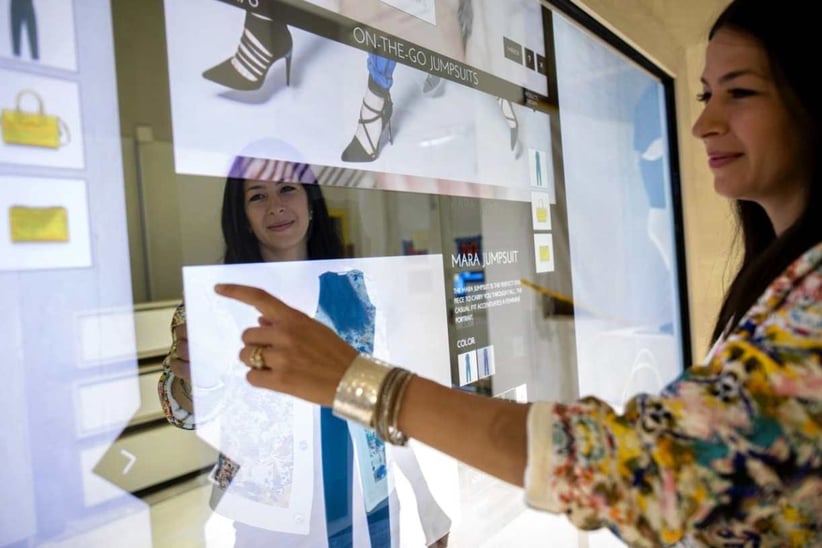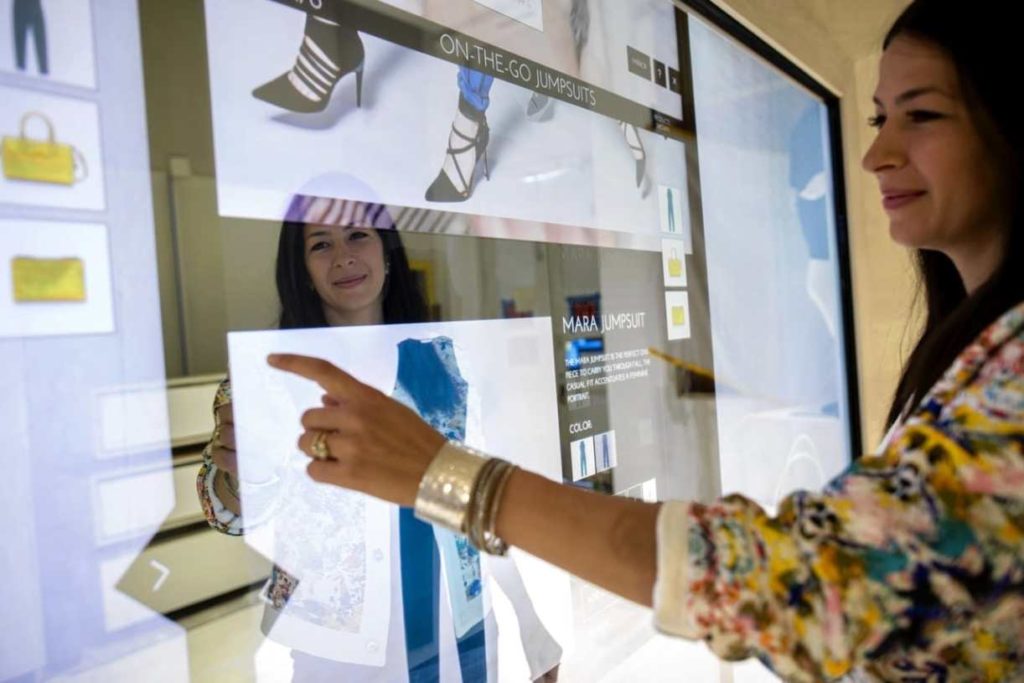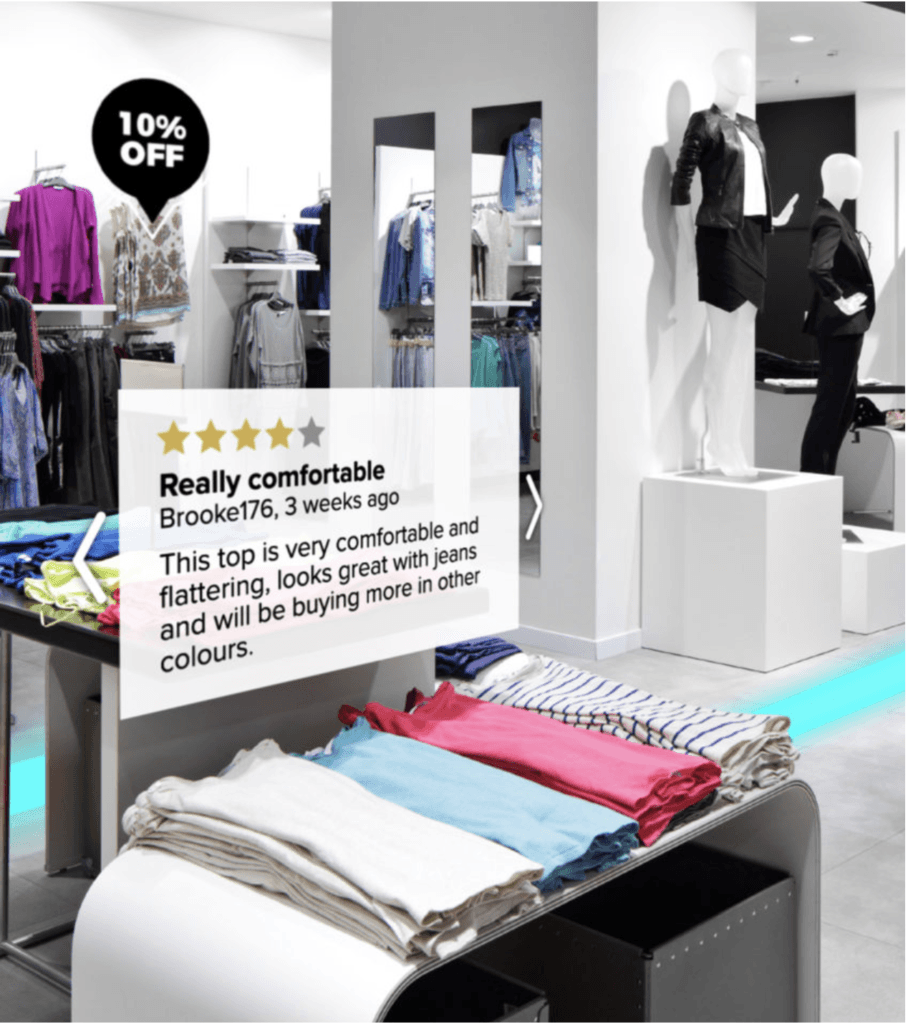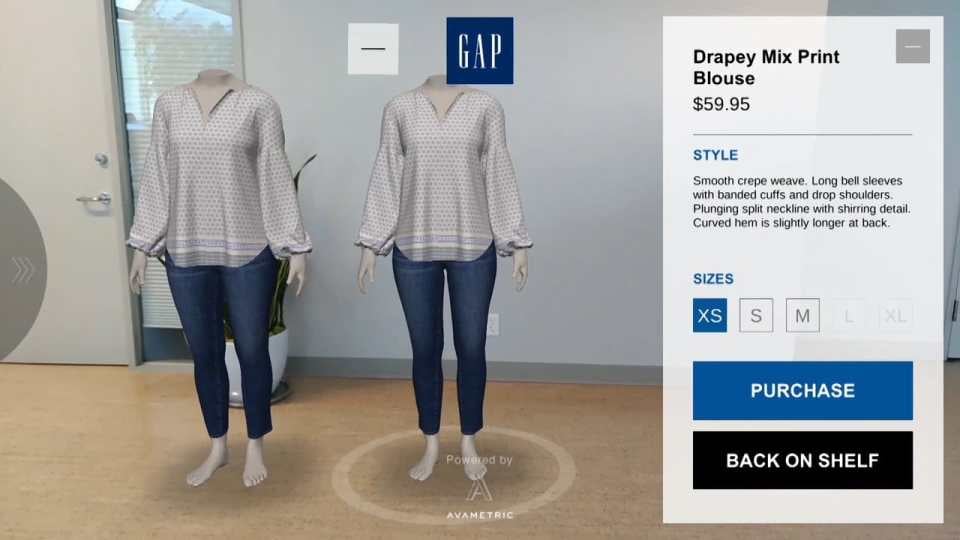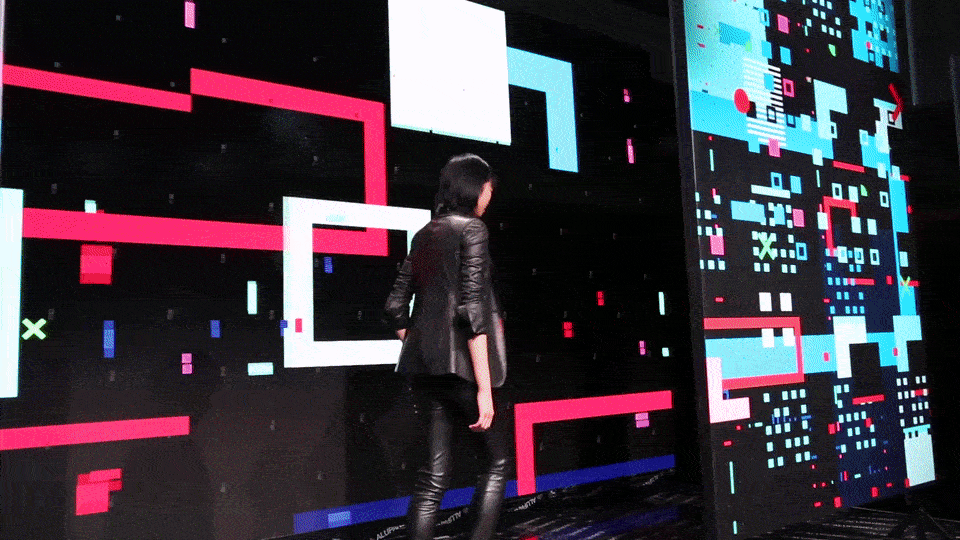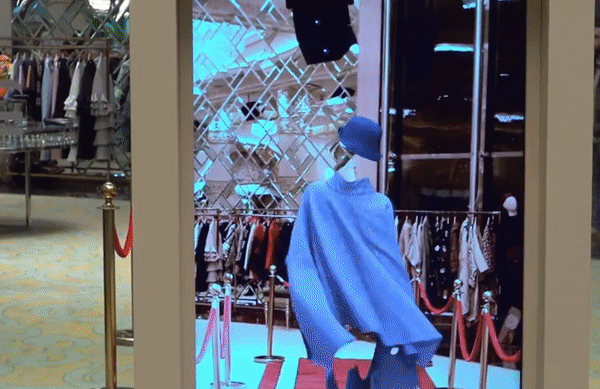In the years to come, AR will impact all industries on the market. What I believe is that the fashion industry is the first to see the massive shift and is beginning to deliver the customer-first experience that will soon change our approach to shopping.
“Augmented reality is going to change the way that the fashion industry creates, showcases and retails its products. The year ahead will see an explosion in opportunities for this immersive technology to totally redefine what we understand as fashion today,” said Matt Drinkwater, head of the Fashion Innovation Agency.
If you’re asking yourself what it’s gonna be about, let me help you there; in this article, I present market research, with some use-cases of AR, on what’s going on in the fashion industry in the context of Augmented Reality. From its early beginnings, Divante has been innovating in eCommerce, making digital transformations of worldwide retailers and setting new eCommerce trends (recently the mobile-first approach and Progressive Web Apps). Now, let’s take a closer look at another rising trend – augmented reality – and its brave pioneers.
Unnoticed value of augmented reality
It happens very rarely that a new technology gains such popularity as Augmented Reality (AR) has. While blockchain and most AI-based projects seem like ‘not-market-ready-yet’ in many cases, I’m pretty sure that AR has begun to shape the reality around us and we even didn’t notice it.
While talking with my friends about augmented reality, the most common reactions are: humming, scratching one’s head or some mumbled answers like “Yeah, that’s the thing where we see Anakin Skywalker’s hologram, right?”.
Meanwhile, they’re playing PokemonGO, using filters on Snapchat, sending AniMoji’s and decorating their homes by purchasing items after checking that they fit with IKEA Home. These are all great examples of AR usage, and sadly, I haven’t seen any Star Wars holograms there.
AR can be considered as existing reality with immersed digitalization – it’s a popular statement right now, that in the future, we’re going to look back and be extremely surprised how we were living without digital layers on the physical world!
There are no doubts that the fashion industry, especially when it comes to eCommerce processes, is quite innovative. We’ve seen it many times, for example with newsletters, loyalty programs or social selling. Everything that’s “sexy”, finds early adopters in eCommerce.
Soon, choosing and trying on clothes will begin with augmented reality. Source: Engadget
Main trends of AR for the fashion industry
Filters (just like Instagram’s or Messenger’s) were one of the first AR functionalities that users loved. It has been proven that AR is there, in general, to help customers feel better already. Therefore, it’s an obvious way for me to dig into AR with that particular industry – isn’t fashion about making people feel good and happy?
What we’ve already seen are three main trends in the fashion market which I’d like to discuss:
- Try before you buy – where retailers are basically closing the gap between online and offline channels – a customer can try on the product on the screen and see how it looks on him or her, or how makeup suits them, etc.
- Enhancing an in-store experience – where brands are adding AR to drive traffic into the brick-and-mortar store and encourage people to visit physical stores more and more – an idea to prove that offline stores are not dead yet.
- Engagement in social life – where brands can create outstanding brand awareness and include some specific edge-cases of their own identity.
These trends are crucial, especially for younger generations like Millennials or even more so for post-millennials (aka Generation Z/@), who present entirely new user behaviors. Raised hand-in-hand with technology fitted to their needs, they expect different and hyper-personalized things from brands.
Some savvy brands are starting to notice it, and are using AR to improve marketing campaigns and enable businesses to deliver a customer-first experience, in real time, in the way their products are meant to be presented.
Imagine brick-and-mortar stores that present product reviews. Photo Source
Try before you buy
Customers buying online tend to buy more than they would in a traditional store, and then return products that don’t fit them (because of the cut, color, size, etc.). In effect, a huge amount of clothes bought online are being returned. (I even see it in myself – I prefer to buy 15 items on sale and then return 10, rather than buy 5 and return all of them). It’s much easier to make a choice when you’re in a store and you can try the clothes on, right? So, wouldn’t it be wise to move that experience into online shopping?
Examples of AR powered fitting apps
Some companies have already enabled AR filters to help the customers visualize how the product looks on them. From current delightful projects, we need to outline “YouCam Makeup” with a magical makeover assistant:
The YouCam Makeup app provides virtual cosmetics and was designed so that you can try different colors, brands of makeup products and pick the one you like.
Thinking about clothing brands, Converse and Lacoste enabled their customers to try on a pair of their shoes by simply pointing their iPhone camera at their leg and receiving a visual reference on how it may look when you buy it:
And just one remark here – some of these projects were created back in 2011 and 2012 – I’m 100% sure that we can do much more with current capabilities.
OK, let’s make a smooth transition from trying on new products to enhancing an in-store experience by giving an excellent example of whether AR shall be available through an app anywhere or in-store: GAP’s virtual fitting room.
Source: Gap
By using this impressive app, you may see how different sizes of GAP clothes (let’s have some fun: available online or maybe just those available in a particular store?) will look on your body shape. If you enjoy the look, you can order them online or pick them up directly in the store.
How cool is that?!
Enhancing an in-store experience
Retail has come face to face with the enormous challenge put forth by eCommerce – it’s nothing new. Sometimes, it’s just too expensive and incomparably less attractive for the majority of young and busy people, and so some brick-and-mortar stores close or reduce, some other decides to be online-only.
Although “being busy is the new being stupid”, I am (among many others) more attracted by buying clothes on marketplaces or fast and reliable (especially mobile-first) eCommerce stores than in crowded and messy shopping malls. Nevertheless, what brands can do with innovations nowadays to attract people is far beyond one’s imagination. To give you a feel, here are some examples:
ZARA impressed everyone by using AR to present their latest collection on the storefront. Thanks to the augmented reality, ZARA’s models came out from the storefront’s decorations and started walking around and showing the garments. To be honest, it was this example which inspired me to dig deeper into fashion’s AR possibilities.
Timberland shows us another example of using the storefront to attract customers with AR. In the virtual fitting room people could try on clothes from the newest collection without actually wearing them:
Luxury brands are not far behind and give us even more inspiration to leverage AR. Last year, Gucci enabled their customer (after purchasing in particular stores) to view scannable ads with interactive campaigns that, thanks to AR, let the users see almost magical animations on the flat adverts’ surface.
How about a virtual fitting of clothes in different colors when something is not available in a particular offline POS? That’s exactly what UNIQLO’s customers can find in the fitting rooms via smart mirrors:
Smart mirrors are there to help, really.
Through the smart mirrors, not only can customers try products in a store, but they can also request a different color, different size, maybe even share it to see a friend’s reaction – everything which will help to make a purchase decision. Less uncertainty, higher accessibility.
What is more, brands can learn a lot from smart mirrors – how about a jacket that was tried more than a hundred times over a week and hasn’t been purchased? Maybe the fit is wrong or it isn’t trendy this season? Big Data will help you with business intelligence decisions here – let’s predict the future!
Engagement in social life
If you’re wondering if it’s even possible, you’ll find an awesome example in this article from Nike&S23 show during The Next Web. Just three letters – WOW – augmented reality at its current finest. With this project, Nike proved that AR helps to engage the core fans, shapes new user behaviors, and even stops aggression.
What comes next is an excellent way to enrich fashion shows and catwalks by markers on the stage, as was done for NYC Fashion Week…
… or by such giants as Moschino in collaboration with H&M, creating an immersive fashion experience.
Need more inspiration? How about crossing the cultural divide, like that one in Iran where you can have possible sanctions by showing clothes on “real” models? An awesome idea of a fully-virtual catwalk has already been developed:
(gif: source https://vrscout.com/news/ar-fashion-iran-invisible-models/ )
Top-notch brands like Burberry have seen AR as an engagement solution since back in 2017
Augmented reality benefits for the fashion industry
You’ve seen some excellent use-cases of augmented reality in fashion, but let’s engage our imagination a bit further to think about some not so obvious benefits, with edge-cases as well:
- While renting a store on 5th Avenue in NYC or Champs-Elysées in Paris may be way beyond your budget, you can create an AR campaign in that particular area.
- While selling to customers that are geographically isolated, you can carry out a marketing campaign using so-called “markers” to enrich offline marketing and widen your target group by doing so.
- While partnering at some events or music festivals like Coachella or Open’er, you can create special buy-only-here-and-now promotions and collections that’ll be buyable only from devices at some range from your “spot”.
- While millions of dollars of unwanted clothing are being returned by customers every year, followed by BBC article that says “Researchers who questioned over 1,000 online shoppers found women’s clothing had been returned by 63% of them”, you can significantly reduce returns of clothes bought online by providing a try-on experience.
Implementing augmented reality in eCommerce
Both Google and Apple have seen that this trend is already happening, and, while AR has been around for many years, it may shoot up the adoption curve due to the rising popularity of Apple’s ARKit and Google’s ARCore.
Although we’ve already seen a lot of AR implementations inside native apps and wearables, we have strong foundations to believe (thinking about popularity and accessibility of Progressive Web Apps) that Augmented Reality is going to be a part of the daily web experience.
Just take look at Google’s WebXR, which pushes more and more new methods to help immersive web code place objects in the real world. By connecting it with PWAs (via Vue Storefront for example), you can already use really cool features that were previously reserved for the native app only. Social sharing is only one of them:
Another AR solutions is smart mirrors. Although they are in their infancy, they already have rich open-source solutions, with the most popular GitHub repo being the JavaScript-based MagicMirror.
Just imagine the power of web reach and feasibility of PWA’s combined with the power of hyper-personalized content and a try-on experience.
While that may have previously been enough for brands to represent the desired lifestyle, now they will be forced to meet expectations of one’s current lifestyle. That’s the future we’re just about to enter. There are no doubt’s that the industry is starting to solve real problems in fashion with technology, rather than treating it as a gimmick.
“ target="_blank"I don’t think there is any sector or industry that will be untouched by AR,” said Apple CEO Tim Cook, while interviewed by Vogue Magazine.
Leave your thoughts in the comments or drop me a line if you’d like to be a part of it!
Published February 5, 2019

